
October’s Birthstones: Exploring Opal & Tourmaline
Those born in October have two traditional birthstones: tourmaline and opal. Both unique gemstones have a beautiful, diverse range of colors and optical effects.
Like September, the month of October was named from the Latin octo, meaning “eight,” for its original place in the 10-month early Roman calendar. Anglo-Saxons called October Winterfylleth, meaning “winter full moon,” because they believed winter began during October’s full moon.
One interesting Roman October holiday was Mundus Patet, where the realms of the living and dead were open to each other.
Today, similar holidays like Dia de Los Muertos and Halloween are celebrated in October. October symbolizes fulfillment, reaping what you’ve sown, and the life cycle.
Let’s see if that symbolism matches the October birthstones! Today, we’ll go over all the tourmaline and opal history, properties, meanings, and uses as October birthstones.
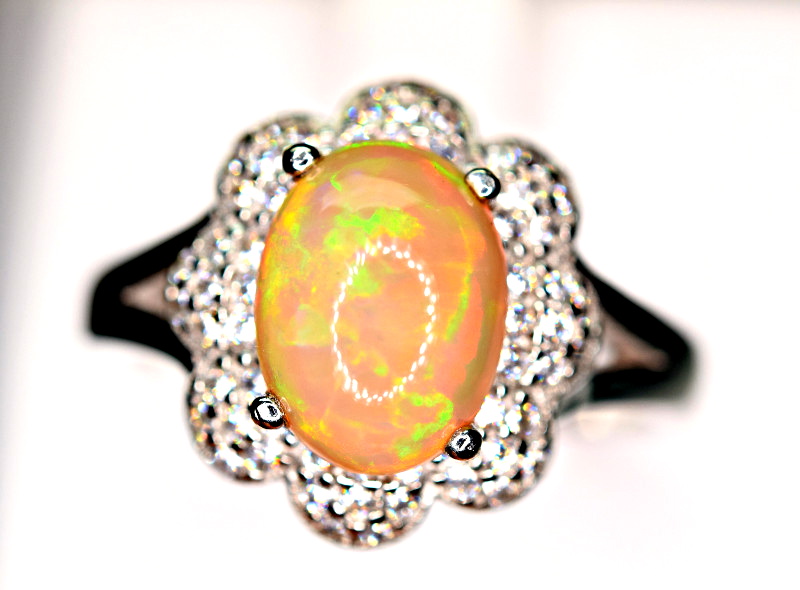 Pictured above: Precious opal ring
Pictured above: Precious opal ring
Historical & Cultural Significance of October Birthstones
What is the official birthstone for October? There are two official semi-precious gemstones designated as October birthstones: opal and tourmaline.
But why are there 2 birthstones for October? Well, there weren’t always two.
The first birthstone lists, created in the 1st to 5th century AD and inspired by Biblical gemstone lists, had October’s birthstone as beryl (or aquamarine specifically).
Modern formalized lists began in 1870, when Tiffany & Co published a pamphlet of “Gregorian Birthstone Poems.” October’s poem was about opal.
The first standardized list came from the National Association of Jewellers (now Jewellers of America) in 1912, who designated opal as the primary October birthstone and tourmaline as the alternative.
In the 1950s, the Jewellery Industry Council of America amended the 1912 list, naming specifically pink tourmaline as the October alternative.
The most recent 2016 American list has opal and pink tourmaline in equal priority for October. The 2013 UK list only has opal.
Surprisingly, the two gems that honor the “dark and spooky” month of October are largely rooted in rainbow-related lore.
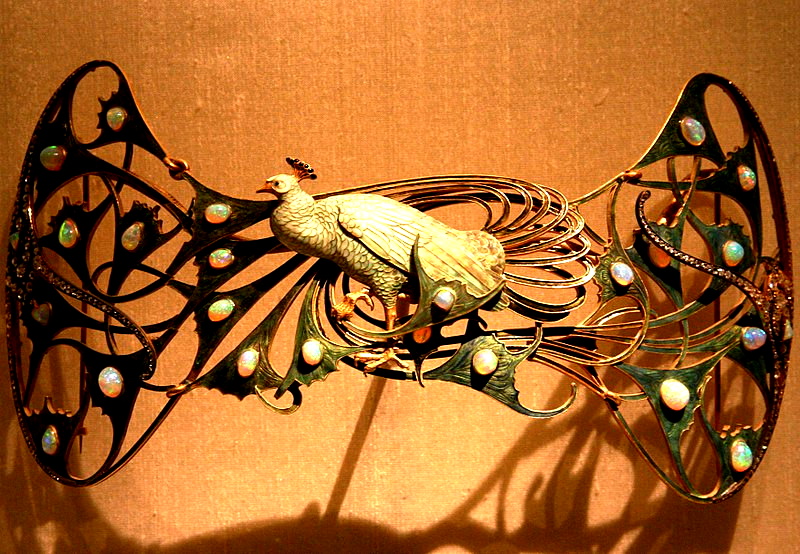 Pictured above: René Lalique (1860-1945); ‘Peacock’ corsage ornament, circa 1898-1900 with gold, opals, diamonds and enamel; Calouste Gulbenkian Museum | Image credit: © José Luiz Bernardes Ribeiro / CC BY-SA 3.0
Pictured above: René Lalique (1860-1945); ‘Peacock’ corsage ornament, circa 1898-1900 with gold, opals, diamonds and enamel; Calouste Gulbenkian Museum | Image credit: © José Luiz Bernardes Ribeiro / CC BY-SA 3.0
Opal’s Mythical Origins & Ancient Folklore
Ancient Greeks believed opals formed from tears of joy shed by the sky god Zeus after defeating the Titans.
Ancient Romans considered opal the queen of gems. One Roman scholar, Pliny the Elder, wrote about opals having all the best qualities of other valuable gemstones like ruby, emerald, and amethyst.
Indigenous Australian (sometimes called “Aboriginal”) opal lore dates back centuries.
One myth about opal origins is of the Rainbow Serpent, a powerful being that flew between water holes, and its iridescent scales fell to the earth as opals.
Another Australian opal origin myth says that an ancestral Creator spirit, went to earth by traveling by rainbow, and opals emerged where their feet touched the ground.
An ancient Indian myth says the Mother Goddess turned the Virgin Goddess of the Rainbow into an opal to help her escape the unwanted affections of multiple gods pursuing her.
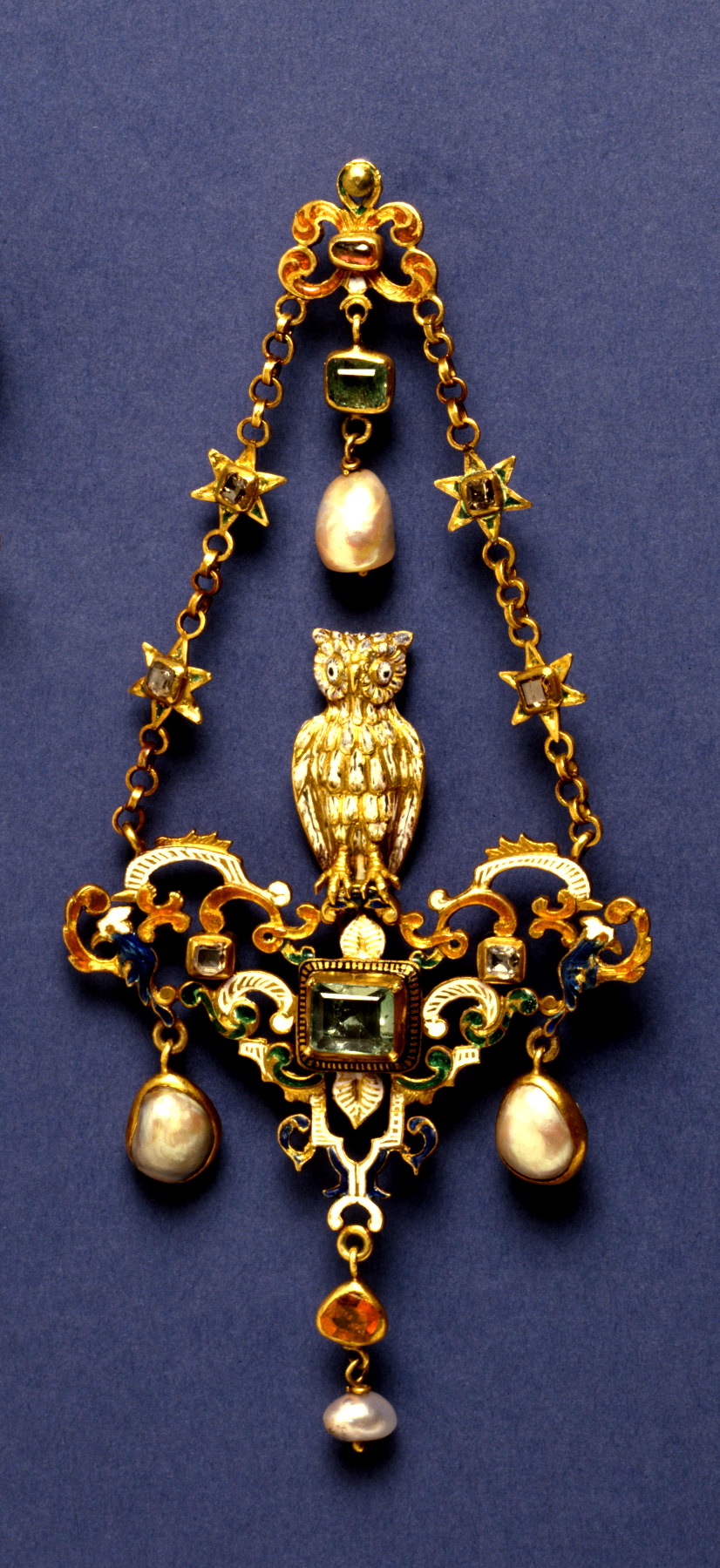 Pictured above: Gold owl pendant with tourmaline, ruby, diamond, and pearl; Dated to 19th century, formerly thought to be from the 16th century; Displayed at Walters Art Museum | Image credit: Walters Art Museum, Public domain
Pictured above: Gold owl pendant with tourmaline, ruby, diamond, and pearl; Dated to 19th century, formerly thought to be from the 16th century; Displayed at Walters Art Museum | Image credit: Walters Art Museum, Public domain
Tourmaline’s Diverse Historical Connections
Tourmaline has a slightly shorter history than opal, but it’s equally fascinating.
The name for this October birthstone comes from the Singalese (Sri Lankan) word turmali, meaning “mixed gems.” Dutch merchants coined the name for colorful stones in Sri Lankan gem parcels.
Dutch trading of “schorl” (black tourmaline) dates to at least the 1400s, if not earlier.
Another historical discovery of tourmaline came in 1554. Spanish conquistador Francisco Spinoza found a green tourmaline in Brazil that he dubbed “Brazilian emerald.”.
Another notable tourmaline misidentification is “Caesar’s ruby,” a red stone with history among French to Russian royalty going back to the 1500s. It was discovered to be a rubellite tourmaline in the 1920s.
In fact, merchants likely called colored tourmalines other gemstones until the first species (schorl) was analyzed in 1785. The species wasn’t fully recognized until after the discovery of boron in 1808.
After tourmaline was discovered in California in 1892, much of the state’s pink tourmaline was sold to Chinese Dowager Empress Tz’u Hsi, who favored the gem.
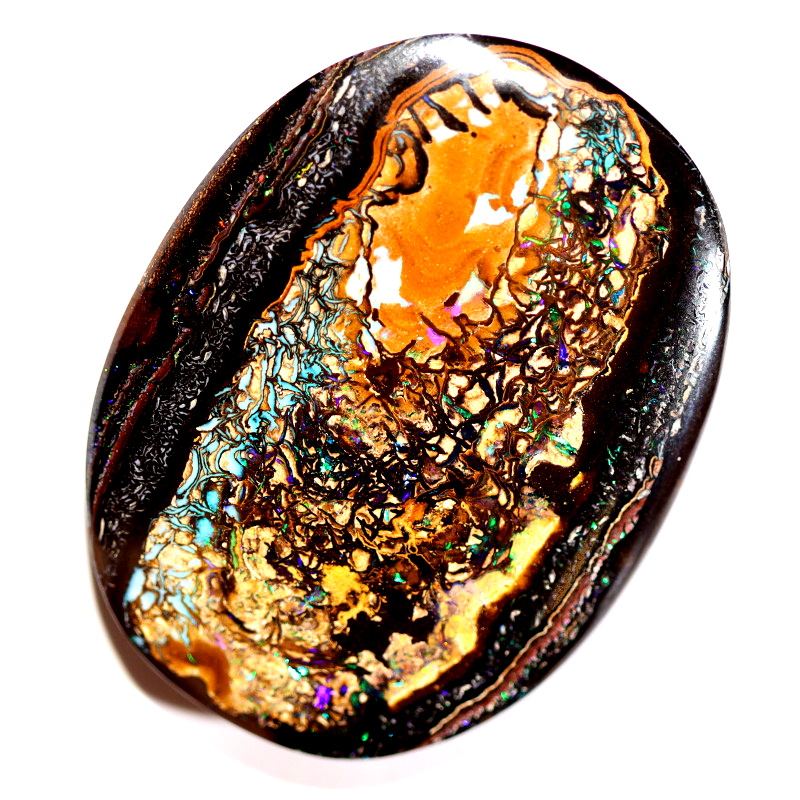 Pictured above: Polished matrix opal
Pictured above: Polished matrix opal
Geological Marvel: The Formation of Opals and Tourmalines
Starting with opals, these gems are amorphous mineraloids, lacking crystalline structure. They’re composed of silica and varied water content.
An opal forms when water containing dissolved silica settles into an area like an ironstone crevice, or rhyolitic geode (“thunderegg”). When the water evaporates, the gel solidifies into opal.
The gem can also form around fossils like ancient sea creatures (e.g. opal belemnite) or wood.
But opal is also a space stone! Opals have been found on Mars in both 2015 and 2023, proving the planet holds water.
The October birthstone tourmaline forms somewhat similarly.
In very deep, high-temperature hydrothermal deposits, tourmaline forms when water containing dissolved boron and silica settles into magma cracks. The magma gradually hardens into rock, the water evaporates, and the elements crystallize.
Mining Locations
Around 95 percent of the world’s precious opal comes from Australia.
Most tourmaline gems come from Brazil or countries in Africa. California, USA, is famous for its pink tourmaline.
 Pictured above: Common orange fire opal, faceted
Pictured above: Common orange fire opal, faceted
 Pictured above: Precious opal from Lightning Ridge, Australia exhibiting vivid play of color
Pictured above: Precious opal from Lightning Ridge, Australia exhibiting vivid play of color
Opal's Playful Colors: Unveiling the Magic Within
The broadest opal categories are common opal vs. precious opal.
The opal October birthstone’s composition is made up of silica spheres surrounded by water. If the spheres are disorganized with uneven sizes, you get common opal. Uniformly sized and arranged spheres (like a Buckyball) results in precious opal.
Only “precious opal” displays play-of-color, where iridescent-like colors flash from its surface.
NOTE: Some gemologists use “play-of-color” synonymously with “opalescence.” Others define opalescence as the milky or near-pearly look of some common opals.
Different types of opals are mostly categorized by their body tone (background color), transparency, and play-of-color.
The main types of opal body tones are white opal, gray opal, and black opal. These are distinguished using a body tone chart.
Opals with other body colors include:
Purple Morado opal
Fire opal (red, orange, and/or yellow)
Colorless opal varieties include crystal opal, contraluz opal, and jelly opal. Hyalite opal can be colorless. Hydrophane opal turns transparent and colorless in water.
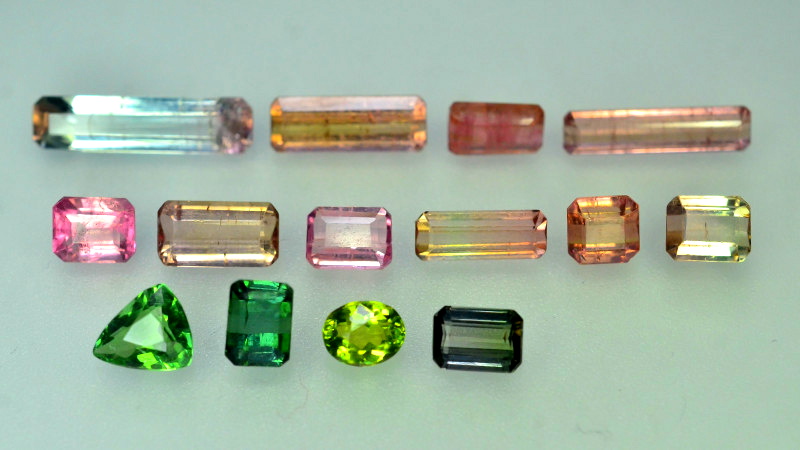 Pictured above: Various colors and varieties of faceted tourmalines
Pictured above: Various colors and varieties of faceted tourmalines
The Many Faces of Tourmaline
“Tourmaline” is actually a complex, varied group of over 30 minerals. The most common species are:
Schorl: Most common species, around 95 percent of all natural tourmalines; Brown to black
Dravite: Relatively common; Nicknamed “brown tourmaline” but can be other colors
Elbaite: Most common gem-quality species, best-known, and most valuable; Can be virtually any color or multi-colored
Each species can produce varieties with different colors. The most commonly sold tourmaline varieties:
Black Tourmaline: Only schorl variety; Most common tourmaline; Always opaque
Chrome Tourmaline: Dravite; Rare vivid-green
Indicolite: Elbaite; Predominantly blue
Paraiba Tourmaline: Elbaite; Intensely saturated neon-blue to blue-green or violet
Rubellite: Usually elbaite; Saturated pink to ruby-red variety, possible purple, brown, or orange undertones
Verdelite: Elbaite; Green variety often called “Brazilian emerald” or “Ceylonese peridot”
Watermelon Tourmaline: Elbaite; Bi-colored pink and green, typically with a pink center and green border, sometimes separated by a colorless layer
Siberite: Elbaite, sometimes considered rubellite sub-type; Nicknamed “purple tourmaline” though it’s usually reddish-violet or violet-red
The pink tourmaline birthstone is an elbaite variety, often falling under rubellite or siberite. Multi-colored options include pink and green watermelon tourmaline and pink and orange “sunset tourmaline.”
The rarest tourmaline variety is Paraíba tourmaline. Pure yellow, orange, blue, purple, or color-changing tourmalines are also rare.
Another factor is pleochroism, which tourmaline is prized for. Specimens that display strong pleochroism are higher-value.
Speaking of value, how are the October birthstones graded?
 Pictured above: Faceted watermelon tourmaline
Pictured above: Faceted watermelon tourmaline
Evaluating Quality: Opal and Tourmaline Characteristics
Tourmaline grading is much more straightforward than opal. Below, we’ll focus on the standard gemstone value factors — color, cut, clarity, carat weight, and treatments — for both opal and tourmaline. You can learn more about how opal value is graded here.
Color
Opal: The main value factors for these birthstones are the opal’s color (body tone) and the presence of play-of-color. The most common opal color by body tone is white, followed by gray and green. The rarest is black or red. Overall, precious opals are much more valuable than common opals.
The best play-of-color has flashes of red (or every color), displays unique patterns, and covers the stone’s entire surface. Darker specimens like precious black opals display brighter play-of-color, adding to their value.
Tourmaline: The rarest and most valuable tourmaline October birthstone color is Paraiba tourmaline. Black, red, and pink tourmalines are more common. Bright green and blue pleochroism, parti-coloring, or color-changing properties can boost the birthstone’s value.
Cut
Opal: Opals aren’t faceted as commonly as other gems — the one commonly faceted variety is fire opal. Most often, you’ll see opals cut into cabochons or beads. Play-of-color is best in translucent to opaque opal cabochons or fully transparent faceted opals. Many opal cabochons are composites, like opal doublets or triplets.
Tourmaline: Tourmaline gems are often faceted, often with long rectangular shapes. Brilliant cuts may be chosen for more valuable varieties like Paraiba tourmaline. Heavily-included tourmalines are often made into cabochons or carvings, while bi-colored stones may be sliced.
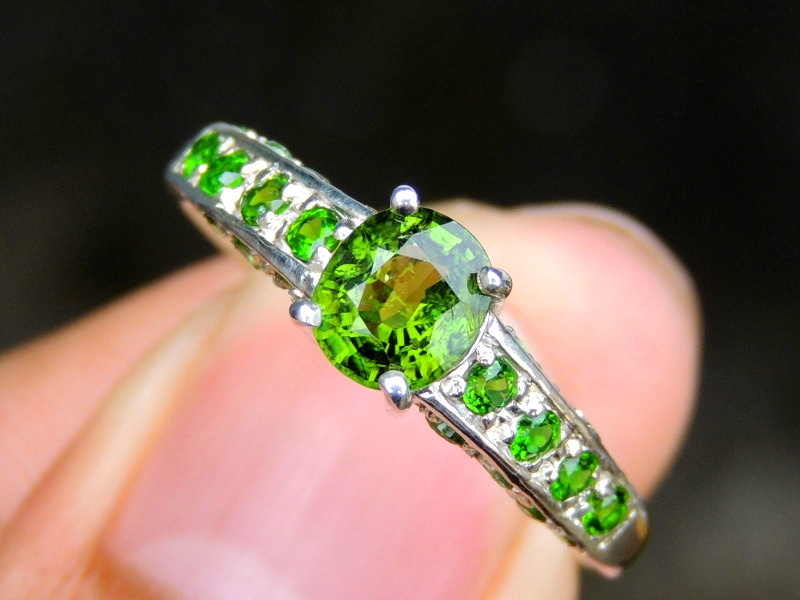 Pictured above: Faceted chrome tourmaline ring
Pictured above: Faceted chrome tourmaline ring
Clarity & Transparency
Clarity describes the degree of visible inclusions in a stone, which lowers its transparency and value.
Opal: Inclusions generally lower opal’s value. Some inclusions and additional material around an opal leads to distinct varieties like dendritic opal, matrix opal, and boulder opal.
Full transparency is rare and valuable in opals, though black opals are better opaque. Cloudiness will usually lower value.
Tourmaline: Most tourmalines have Type II clarity, meaning minor visible inclusions are expected. Chrome and green tourmalines are Type I (usually inclusion-free), while Paraiba, rubellite, and watermelon tourmaline are Type III (always visibly included).
More visible inclusions and lower transparency mean lower-value tourmaline. The only value-boosting inclusion is the presence of aligned tubes causing chatoyancy (“cat’s eye” effect).
Tourmaline itself is an inclusion in tourmalated quartz.
Carat Weight
Opal: Rarer opals like black or crystal opal may have price-per-carat jumps at intervals like 1-5 cts, 5-10 cts, and 10+ cts.
Tourmaline: Tourmaline birthstones range in size, but gems above 5 cts are pricier. The variety also matters — chrome tourmaline is commonly found up to 5 carats, but Paraiba tourmaline is rarely larger than 1 carat.
Treatments
Opal: Untreated opals are significantly more valuable than treated ones, especially rare varieties like black opal. You can learn how to test for opal treatments here or take your October birthstone to a lab to confirm.
Tourmaline: Treatments will also lower tourmaline’s value, but they’re common in this October birthstone. Common treatments (often to improve coloring or clarity) include irradiation, heat, and/or fracture-filling.
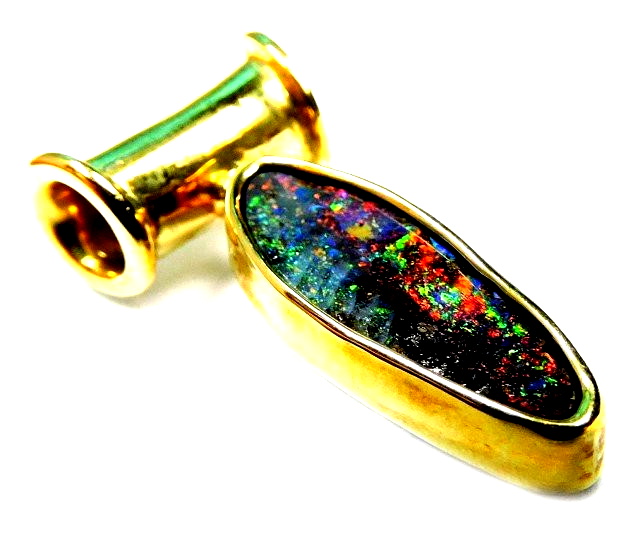 Pictured above: Australian black opal pendant
Pictured above: Australian black opal pendant
October Birthstones Meanings & Cultural Beliefs
What is the spiritual meaning of the October birthstones? Besides both gems’ association with rainbows, each one has their own unique symbolism and mystical properties.
Opal Meanings
According to ancient interpretations, opals symbolize purity, hope, and perspective. Romans called opals cupid paederos, or “child as beautiful as love.”
Despite opals being temporarily stained in the 1800s with superstition about being cursed, many ancient societies like China believed opals were lucky. One common superstition that persists is that it’s unlucky for anyone not born in October to wear opal.
As a healing stone, many of opals’ purported properties revolve around vision and the mind. The October birthstone’s healing powers are believed to include treating eyesight problems, boosting cognitive abilities, and letting you see the future.
Tourmaline Meanings
Overall, the tourmaline October birthstone symbolizes compassion, open-mindedness, and forgiveness. It’s sometimes called the “Stone of Reconciliation.”
Each tourmaline color has its own meaning and healing powers. Focusing on pink tourmaline, this October gem is said to boost energy, encourage love, and help smooth relationship troubles.
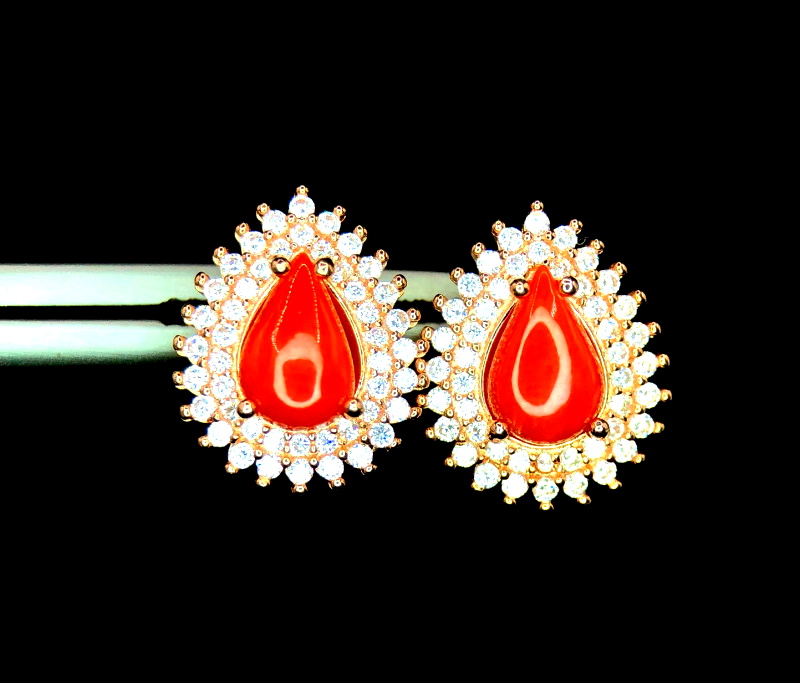 Pictured above: Red coral earrings
Pictured above: Red coral earrings
Alternative October Birthstones
What is the most popular birthstone for October? Opal is usually the “classic,” more popular choice over tourmaline, but there are other October birthstones and crystals!
Popular October birthstone alternatives are beryl and coral.
Astrologically, what is the Libra birthstone? September-born Libras (after the 23rd) can benefit from peridot, rose quartz, and morganite.
What about Scorpio birthstones? September-born Scorpios (before the 23rd) can take advantage of black tourmaline, malachite, and coral.
Personalized October Birthstone Gifts
You have the gem, now what do you do with it? A great October birthstone gift comes from the heart and celebrates your October-born loved one.
Since October is among the most common wedding months, an October birthstone ring is a great way to celebrate too!
You could even get customized jewelry, like an October birthstone necklace with a calendula design, the month’s birth flower.
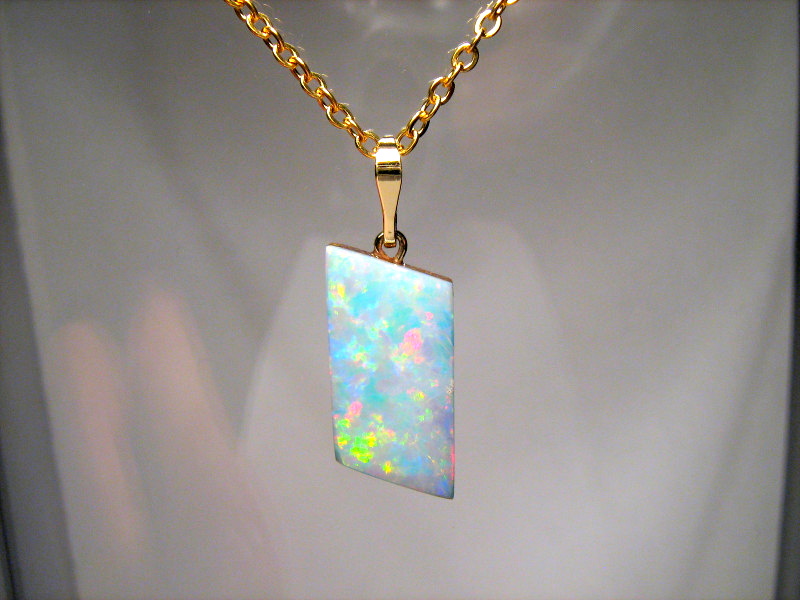 Pictured above: White precious opal pendant necklace
Pictured above: White precious opal pendant necklace
Overjoyed by October Birthstones?
Both tourmaline and opal are beloved for their range of colors and unique appearances. Do you prefer the recently formalized pink tourmaline, the older traditional opal, or another October birthstone? Follow your heart to which gem feels like you!
Find traditional and alternative October birthstones from our hundreds of gemstones available, or browse our extensive opal selection at Opal Auctions.
Search the Gemstone Encyclopedia
Related Auctions
Related Articles
Originally the Birthstones or gemstones were associated with a zodiac sign or the month of a individuals birth. Find out what your stone is and view the stones we have for sale
8th Feb 2021
There are dozens of quartz and chalcedony gems with various colors and patterns. Learn all about quartz properties and every type of quartz, from amethyst and agate to plasma and phantom quartz!
15th Oct 2020
Hackmanite is a pink to violet sodalite gem known for its unique color-change and luminescence. Learn why hackmanite is special, from its rare qualities to the types of hackmanite jewelry available.
28th Mar 2018
Latest Articles
Shortite is a rare mineral and rarer gemstone, usually found as colorless or yellow wedge-shaped crystals. Learn the value, history, and properties of shortite in this guide!
9th Dec 2024
Senarmontite is an uncommon antimony mineral mostly used industrially but occasionally collected as rare gems or pearly crystals. Find out all of the traits, uses, prices, and history of senarmontite.
27th Nov 2024
Tantalite is a group of red, brown, or black minerals containing the rare and valuable element tantalum. Discover the uses, history, prices, and properties of tantalite gemstones in this guide!
11th Nov 2024
Article Categories
How To's is where you will find helpful articles from gem Rock Auctions on how to cut gemstones, select gemstones and buy gemstones.
9 Articles




